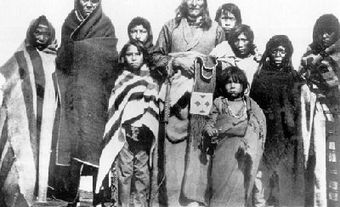
At 4:10 AM on 29 April 1903, 74 million tonnes of rock crashed down the east slope of Turtle Mountain in the Crowsnest Pass region of Alberta, burying a mine entrance and the eastern outskirts of Frank, NWT (Alberta), sweeping 1.6 km across the valley and covering roads, railways, houses and farms. After 13 hours of heroic effort, 17 men entombed in the mine, fighting a dwindling air supply, dug a new shaft and emerged to freedom. Twenty-three men, women and children were rescued from the rubble, but at least 70 others died in the sudden disaster. The town was evacuated as a precaution against further slides. When none occurred the residents returned and reopened the mine. A new coal mine was opened north of the mountain. In 1913, the old mine was closed and in 1918 fires closed the entire workings. Turtle Mountain is a naturally unstable slope, and earthquakes, erosion and coal mining combined to cause the rockslide. Turtle Mountain is now monitored daily for any movement.

 Share on Facebook
Share on Facebook Share on X
Share on X Share by Email
Share by Email Share on Google Classroom
Share on Google Classroom


